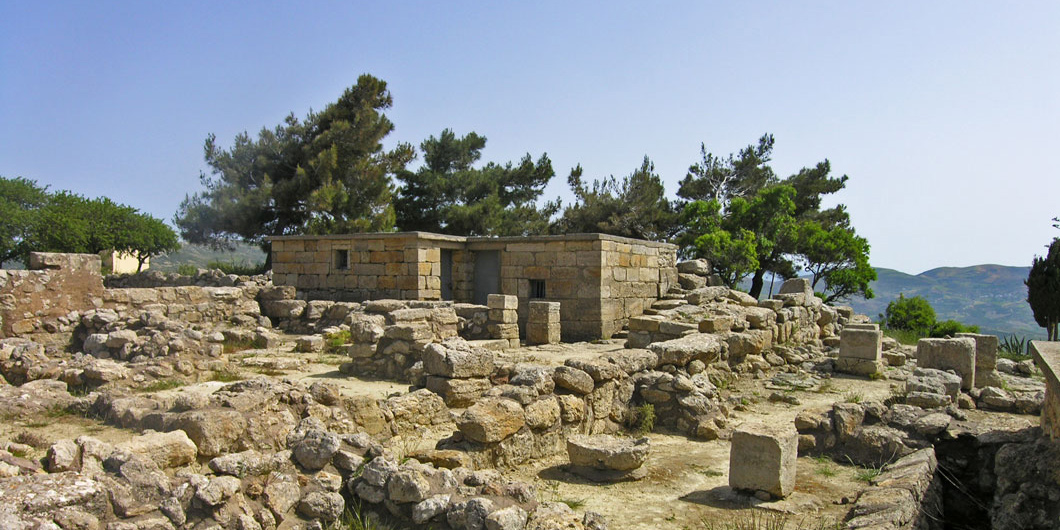The Minoan villa ofVathypetro was discovered at the location of Piso Livadia, on the south-eastern side of Yuktas, during an excavation conducted in 1949 by Spyros Marinatos. The site is located three kilometres south of Archanes.

It was a large building which in some places had two storeys. Its walls were covered with multi-coloured mortar, but had no frescoes. It is believed that it was built circa 1600 BC. It was destroyed and abandoned circa 1550 BC, and then its southern part was rebuilt. An oil press and a grape treading trough were found in the villa, which were subsequently restored; these finds suggest that this building was most likely a farm house. Weaving equipment and potter’s wheels were also unearthed.
The villa had a central courtyard, a colonnaded room with four square-shaped pillars, a storeroom which contained 16 pithoi (large storage jars) and a shrine. One of the most noteworthy finds is a large decorated stirrup jar, a type of vessel used especially as an oil container.
Crete of the time, as well as Mycenae later on, monopolised the trade of olive oil and exported to the countries of the Middle East and to Egypt, given the fact that jars such as the ones unearthed in Vathypetro were also found there.




